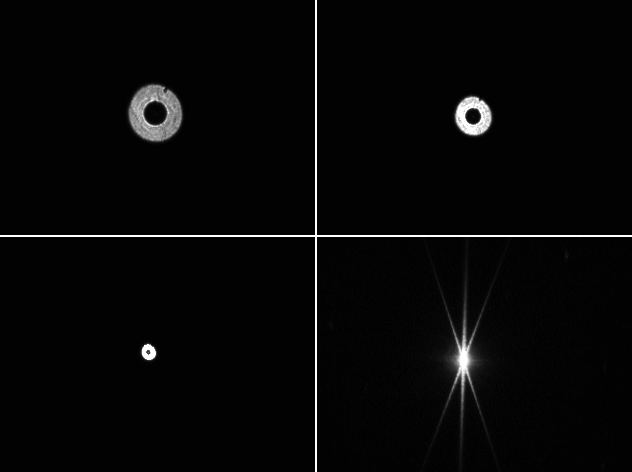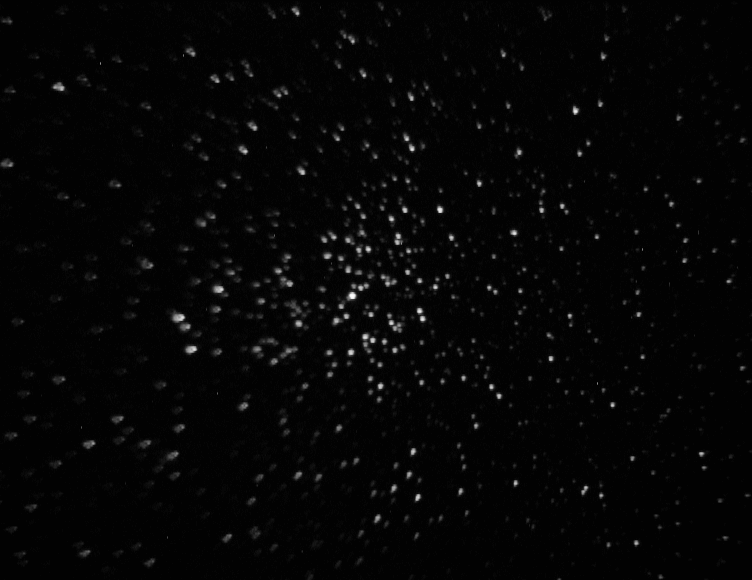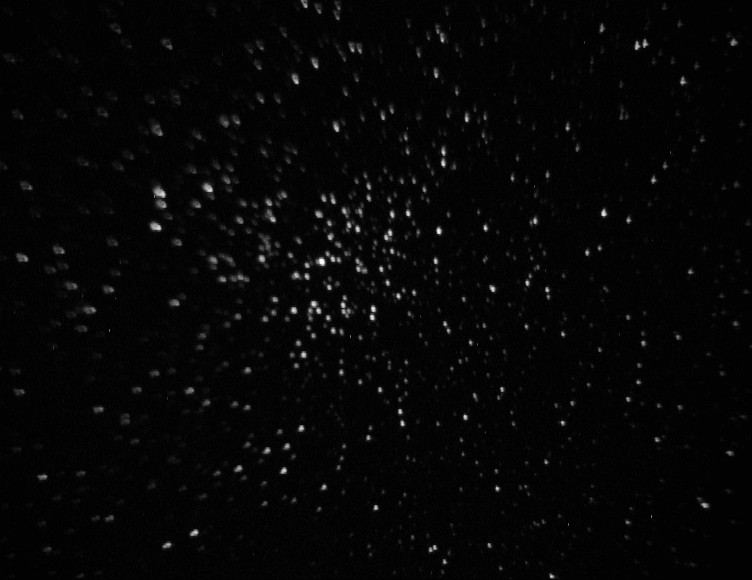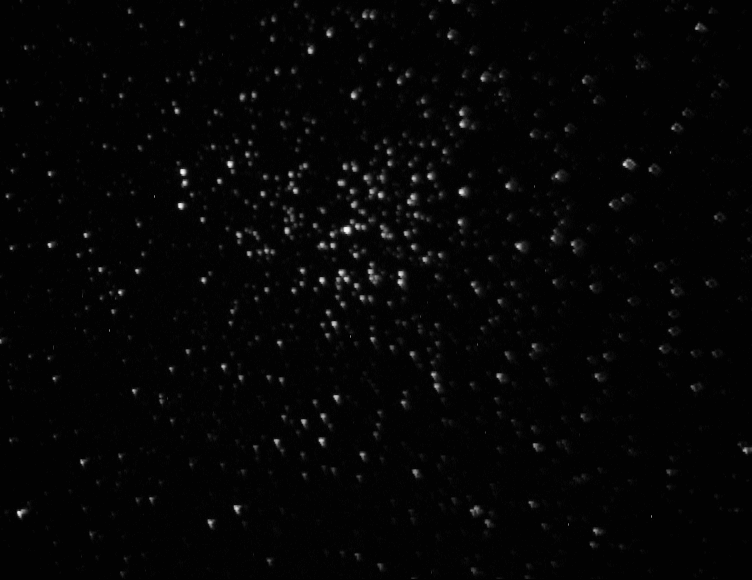

At the suggestion of one of the members of the LX200 Yahoo Group, I did the following experiment. I made images of M37 with the camera rotated 0°, 90°, 180°, 270° relative to its usual position. I did this at the rear of the Focal Reducer since the connection there is a clamp (provided my Meade with the lens). I then rotated the images back in software so that M37 appears the same in all the pictures. Below I show the original and the 180-degree picture. (I felt that the 90- and 270-degree pictures were somewhat confusing because they show more stars to the north and south than would normally be present, but they do show up something a little different so I have put them here. However, before I started I checked the collimation using the star that the telescope selected for high-precision goto for M37 (Meade number 45). Three pictures as I approached focus and the final in-focus image through my Bahtinov mask are shown in the first picture below. To my eyes at least, the first two pictures of M37 are essentially the same (apart from the fact that I didn't rotate the camera by exactly 180°). This indicates that the coma follows the stars when I rotate the camera, indicating that there is nothing out of alignment from the lens onwards. However when I rotate both the camera and the lens together (by unscrewing the lens one half turn) the coma moves to the other side of the picture. To my mind this seems to indicate that there is something wrong with the lens itself. For more details see Part 6.

Star number 45 as I approached focus to demonstrate collimation, and the Bahtinov picture to show focus.

M37 with the camera in its normal position.

M37 with the camera rotated 180° (and rotated back in software).

M37 with the camera and the Focal Reducer rotated 180°.
Home Equipment Part 1 Part 2 Part 3 Part 4
Part 6 Part 7 Part 8 Part 9